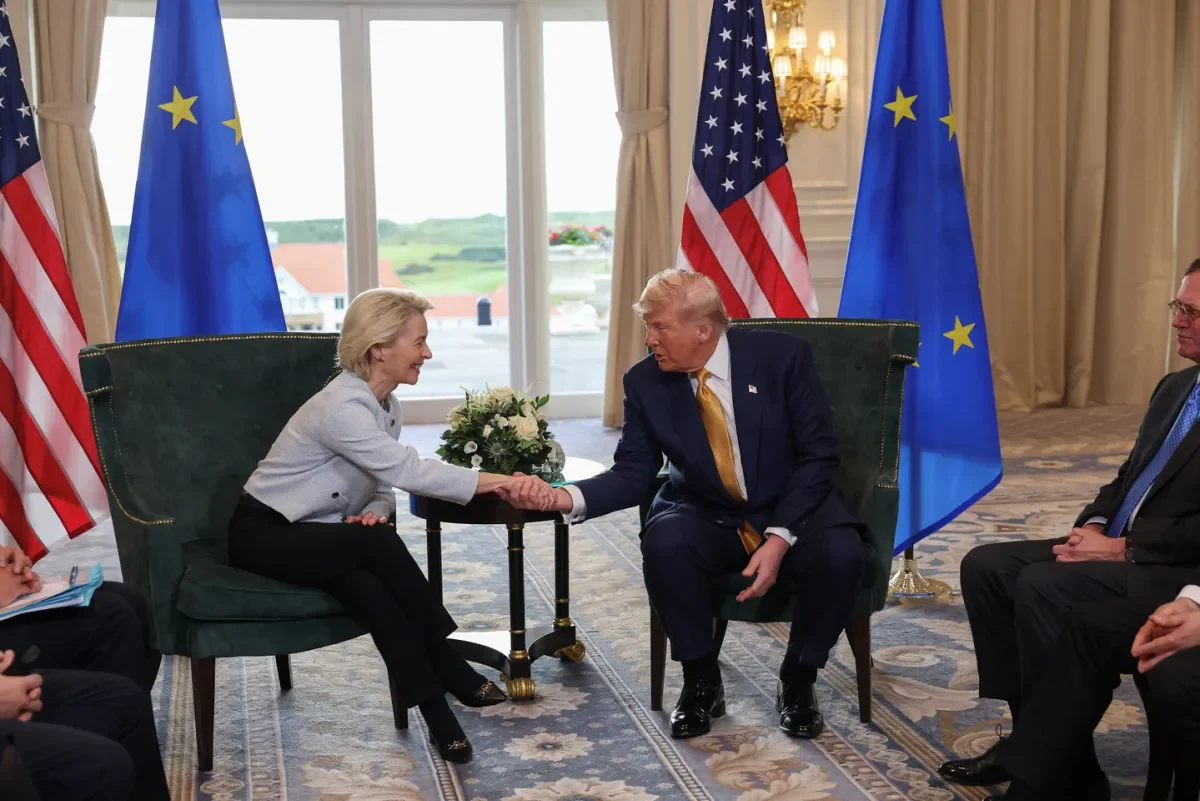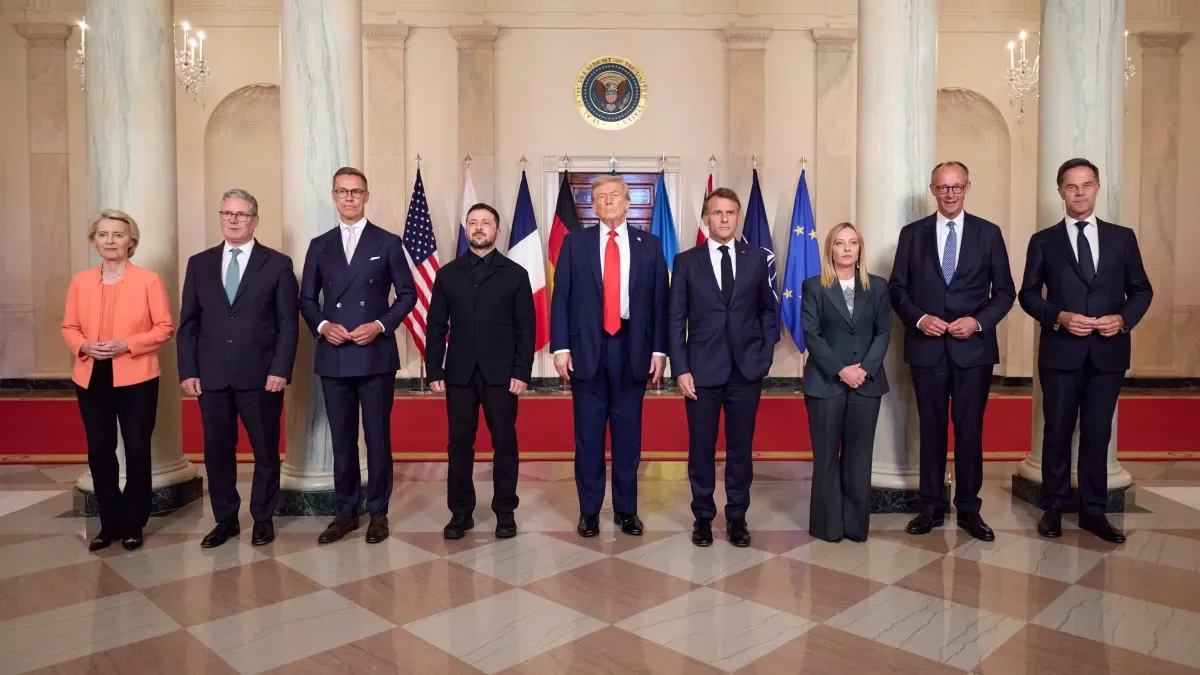
Davide Genini (Dublin City University)
The EU–US trade agreement concluded on 27 July 2025 between Commission President Ursula von der Leyen (on behalf of the 27 Member States) and US President Donald Trump marks the apparent conclusion—barring any last-minute surprises—of the trade war initiated by Trump following his re-election. This confrontation culminated in April 2025 with a blanket 20% tariff imposed by the US on all EU imports. While the new deal signals the end of this trade war, it also marks a significant political and economic turning point for the EU, violating three core postulates that have long underpinned EU policy.
Undermining the EU as the world’s largest open single market
Under the new agreement, a uniform 15% tariff will apply to all EU exports to the US from 1 August 2025—three times the previous average of nearly 5%. In contrast, the US will maintain a zero-tariff regime for its exports to the EU, resulting in a strikingly asymmetrical arrangement. The EU’s longstanding proposal for a ‘zero-for-zero’ tariff regime has been reduced to a narrow range of products, including certain chemicals, generic pharmaceuticals, select agricultural goods, critical raw materials, natural resources, and all aircraft. Additionally, tariffs of 50% will remain in place on EU exports of steel, aluminium, and copper. The EU has also agreed to streamline regulatory procedures for US industrial and agricultural products and to eliminate network usage fees for American tech firms. This lopsided framework represents a departure from the EU’s traditional role as a leader in free, rules-based trade. The driving narrative behind the negotiations was the need to ‘rebalance’ transatlantic trade. However, it’s crucial to note that EU–US trade was already broadly balanced: while the EU typically maintains a surplus in goods, this has historically been offset by a US surplus in services. In 2024, the EU's net trade surplus with the US was a modest €90 billion—a far cry from a structural imbalance warranting such concessions.
Weakening the EU as an autonomous actor
Since the 2022 invasion of Ukraine, the EU has repeatedly emphasised its commitment to strategic autonomy. The June 2023 European Economic Security Strategy was a milestone in this effort, aimed at reducing critical dependencies and enhancing competitiveness. Yet, the new trade agreement appears to undermine these goals. The EU has committed to importing $750 billion worth of US energy—namely LNG, oil, and nuclear fuel—through 2028, alongside ‘significant quantities’ of US-made military equipment. These acquisitions are expected to constitute a substantial portion of the €600 billion in vaguely defined investments the EU has pledged in the US over the next three years. This aligns with the 5% defence spending target set at the NATO Summit in The Hague in early 2025, further entrenching US dominance in European security affairs. Ironically, the EU’s own rearmament initiative—announced in March 2025 under the ReArm Europe Plan—risks becoming a windfall for US defence contractors rather than a driver of domestic industrial capacity. For example, the US-made Patriot air and missile defence system is sold to the US government for $1 billion but priced at $2.5 billion for foreign buyers, raising concerns that the EU may end up paying more for less protection. This not only undermines the efficiency of EU defence spending but also widens the gap between US and EU industrial defence capabilities.
Skewing the transatlantic trade relationship
The EU-US trade agreement, while not yet legally binding, contains provisions that are overwhelmingly skewed in favour of the US. The economic burden on European businesses and consumers from increased tariffs and regulatory concessions far outweighs any perceived benefits in terms of predictability and both legal and economic certainty. The EU has failed to leverage its considerable economic weight—450 million consumers and over 23 million businesses—to secure a fairer outcome. Looking ahead, the long-term effectiveness of Trump’s tariff-centric strategy remains debatable. While the current tariffs could, in theory, generate $2.5 trillion in revenue over the next decade—potentially helping reduce US public debt—these gains would likely be overshadowed by the fiscal costs of the One Big Beautiful Bill Act, which is expected to result in $3.5 trillion in tax cuts over the same period.
The 2025 EU–US trade deal marks a turning point for the European Union. Instead of reaffirming the EU’s role as a powerful and autonomous global actor, it exposes a troubling shift towards passivity—where the EU follows rather than shapes the course of geopolitics.

Davide Genini is a PhD candidate in EU Law at Dublin City University. His research focuses on EU-US foreign and security law, defence industrial law and NATO law.



